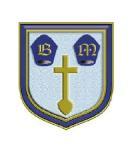PERSONAL, SOCIAL AND EMOTIONAL DEVELOPMENT
Develop their sense of responsibility and membership of a community.
Become more outgoing with unfamiliar people, in the safe context of their setting.
Select and use activities and resources, with help when needed. This helps them to achieve a goal they have chosen, or one which is suggested to them.
COMMUNICATION AND LANGUAGE
Use a wider range of vocabulary.
Enjoy listening to longer stories and can remember much of what happens.
Understand a question or instruction that has two parts, such as: “Get your coat and wait at the door”.
Understand ‘why’ questions, like: “Why do you think the caterpillar got so fat?”
Start a conversation with an adult or a friend and continue it for many turns. Know many rhymes, be able to talk about familiar books, and be able to tell a long story.
EXPRESSIVE ARTS AND DESIGN
Develop their own ideas and then decide which materials to use to express them.
Draw with increasing complexity and detail, such as representing a face with a circle and including details.
Show different emotions in their drawings and paintings, like happiness, sadness, fear etc.
Explore colour and colour-mixing.
LITERACY
Engage in extended conversations about stories, learning new vocabulary.
Write some or all of their name
Engage in extended conversations about stories, learning new vocabulary.
RE/COLLECTIVE WORSHIP
EYFS 10 Prayer
What is prayer?
Islam, Judaism, Hinduism
MEDIUM TERM PLANNING
Growing/Minibeasts Summer 1

PHYSICAL DEVELOPMENT
Use one-handed tools and equipment, for example, making snips in paper with scissors.
Use a comfortable grip with good control when holding pens and pencils.
Choose the right resources to carry out their own plan. For example, choosing a spade to enlarge a small hole they dug with a trowel.
Show a preference for a dominant hand.
MATHEMATICS
Talk about and explore 3D shapes using informal and mathematical language: ‘sides’, ‘corners’; ‘straight’, ‘flat’, ‘round’.
Make comparisons between objects relating to size, length, weight and capacity.
Talk about and identify the patterns around them. For example: stripes on clothes, designs on rugs and wallpaper. Use informal language like ‘pointy’, ‘spotty’, ‘blobs’ etc.
Extend and create ABAB patterns – stick, leaf, stick, leaf.
Notice and correct an error in a repeating pattern.
UNDERSTANDING THE WORLD
Talk about what they see, using a wide vocabulary.
Begin to understand the need to respect and care for the natural environment and all living things.
Understand the key features of the life cycle of a plant and an animal.
Plant seeds and care for growing plants
